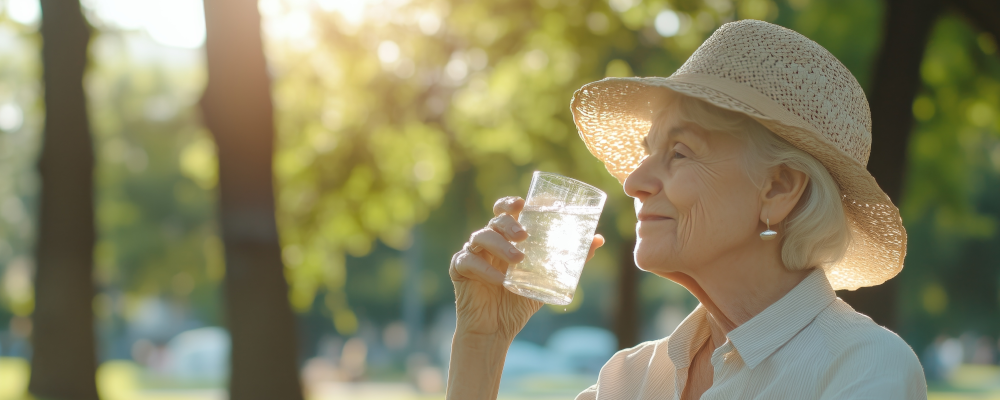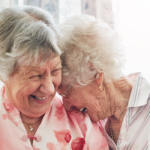When the summer reaches 30 degrees and the nights are tropical, it becomes unbearably hot, especially for older people. Dr. Julia Schoierer has been researching heat resistance in nursing homes at the LMU Hospital in Munich for almost ten years. The medical educator has some cool tips to help in the summer heat.
Organizing a beach party, setting up a Kneipp pool and purchasing cooling vests – when Dr. Julia Schoierer talks about measures that retirement homes can implement to prevent hot days from ending in death due to circulatory collapse, things get colourful. The medical educator talks about a wide range of options.
Gazpacho and cooling vests to combat the summer heat
Her approach: protection against the summer heat must be the first priority. It’s not just about the well-being of the residents; she recommends that social facilities draw up a multi-stage heat plan and get everyone on board. For example, cleaning staff who enter each room know where heat builds up quickly and can give advice.
Volunteer visiting services can relieve the nursing staff, while colleagues working at the bedside can make sure that they wear summer work clothes – or ask their employer to provide them with cooling vests to combat the summer heat, for example. The kitchen can prepare a summer menu that provides the body with additional fluids. In addition to fruit, this includes gazpacho, the cold Spanish vegetable soup, and water ice instead of cake for dessert. It also makes sense to move the sun terrace on the south side of the house to the cooler north side on hot days.
Summer roster

The duty roster can also be adapted to the summer heat. “We need to focus more on people’s living environments,” says Schoierer. If professionals live in urban areas that don’t cool down at night, they can hardly do five night shifts in a row. This is because they can’t sleep in the heated apartment during the day. Even if employees use public transport to get to work, e-bike leasing would be an alternative – perhaps commuting to work by bike would have a cooling effect.
In conversation, Schoierer mentions another approach to combating the summer heat, which is aimed at the familiar habits of residents in residential care: “I think it’s a clever idea to organize a beach party on hot days,” says the heat protection expert. Or alternatively a summer vacation day. In addition to decorations such as parasols, sand and paddling pools (for cool feet), decorated cocktail glasses can encourage people to drink.
Beach party in shorts
Residents who find it difficult to put on airy clothes can be persuaded to rethink their outfits with the sun-summer-good-mood approach. Schoierer reports on dementia patients who remember their own vacation impressions. The obvious question here is which (short) pants the resident wore at the time. Schoierer believes it makes sense to provide relief through reminiscence work.
For the expert, a holistic concept against the summer heat also includes structural aspects. For example, it makes sense to provide shade from the outside with green façades and blinds. Unsealing inner courtyards and terraces also helps to reduce heat build-up. Wooden pergolas, which can be set up in the garden or on the veranda and provide natural cooling in the summer heat with fast-growing vines, can also help – and are therefore more effective than any parasol. In keeping with the motto “lots of green helps lots”, social institutions should transform their gardens into wild meadows instead of maintaining neat short lawns. Indoor and outdoor water features also provide cooling.
Kneipp basin suitable for rollators
“One home has created a kind of Kneipp pool in the entrance area of the retirement home that can even be used with a rollator,” reports Schoierer, who also likes the idea of a water police force in the home. Instead of fines, they hand out cups of juice spritzer and encourage people to drink.
All in all, good ideas for defying the summer heat. They can be implemented, especially if there is a central point for this in the retirement home. After all, communication is – as is almost always the case – the key to success. It should cascade through the home in order to sensitize as many areas and people as possible to heat protection, says Schoierer.

